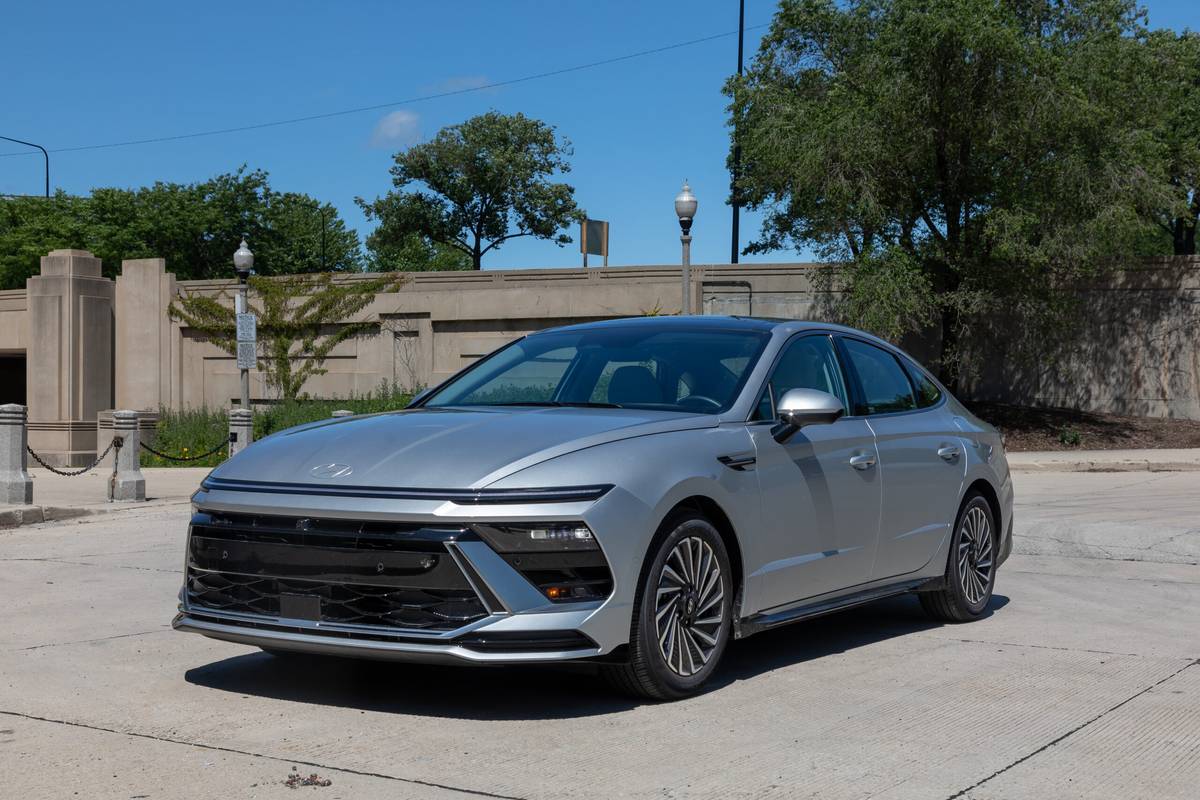Cincinnati.com's view
I’m always up for surprises – if they’re pleasant surprises. Such was the case with this week’s subject, the Pontiac Grand Am, 2002 edition. It was better to spend a week in than I expected, although I still have some deep reservations about recommending it.
This car is worth an occasional revisit if only because it’s one of the nation’s top 10 sellers – the collective wisdom of the marketplace is telling us something. (It may well be that what it’s telling us is that Pontiac has a very efficient fleet-sales arm – Grand Ams are the darlings of rental companies, especially since the comparable Olds Alero is now headed for history’s dustbin.)
The Grand Am, General Motors’ leading compact, available as both coupe and sedan, was given a thorough reworking for the 1999 season, which makes it officially a last-millennium car.
GM is now watching the sales curve, torn between its hunger for the hefty profits that come from a mature design whose development costs have long since been recouped, and the realization that at some point would-be buyers will be drawn to something fresher.
One of the problems with the Grand Am is that the very “expressive” styling, relying on a collection of bodywork folds and creases worthy of a pachyderm, captivates at first but does not wear well. Next to such understated competitors as the Alero, Honda Accord, Nissan Altima and Volkswagen Jetta – to name just a few to which the Grand Am is offered as an alternative – it does look rather 20th Century, especially in the leave-nothing-off GT formulation. Worse, with its visual assertiveness, it promises far more than it delivers. And yet, as legions of renters will attest, it’s a fairly pleasant way to get from A to B.
I tested one of the less-pretentious configurations, an SE1 coupe with 2.2-liter engine and five-speed manual transmission. That’s one notch up from base.
GM will have to do some convincing to sell its new “EcoTec” engine. It’s smaller and less powerful than the 2.4-liter it replaces, though considerably more refined. It promises better durability and gas mileage and lower maintenance costs. The twin-cam engine creates 140 hp (@5,600 rpm) and 150 foot-pounds of torque. In a package that weighs more than 3,000 pounds, that’s not going to rip rubber from rims. If you feel the need to get from standing start to 60 mph in less than 10 seconds, you’d better opt up to the ancient and honorable overhead-valve 3.4-liter V-6. That gets you 170 horses, 190 foot-pounds. Let it be said, however, that the new engine has much better manners than its antecedent. It runs happily to its redline and lacks that thrashy, about-to-blow, can-of-marbles sound.
Mated with a manual transmission, as in the tester, it feels livelier than what the stopwatch’s cold objectivity suggests. It has twin balance shafts to damp vibration, a paper-cartridge oil filter, 100,000-mile spark plugs and sealed-for-life cam-chain-tensioning mechanism.
The transmission was very good, with apt clutch actuation and a fairly good sense of where the various cogs were located. Both fourth and fifth gears are technically overdrive ratios, but with a low first gear and stout 3.94:1 final drive ratio, that works well. The gears seemed well-spaced, with no sags on upshifts or wild revving on downward changes.
(Now that GM owns Saab, you’d think they’d borrow a better idea than the one that requires the driver to put the transmission in reverse so as to be able to remove the key. Just when I thought there was hope for GM, which has actually located the ignition switch on the dash – where it can be seen by a would-be inserter – on a couple of models.)
Happy with regular gas, the Grand Am I flogged about yielded an impressive 27.7 mpg in mostly country driving, which, over glaciated terrain, involved a lot of left-foot work. EPA estimates are 25 mpg city, 33 highway.
The car’s body felt solid, evincing little flexing even over undulant terrain taken vigorously. Interior assembly was such that neither rattles nor squeaks were noticeable. The front buckets offered a reasonable amount of headroom and legroom for a taller-than-average driver, though they were probably not hard enough for long trips nor supportive enough for any kind of playful motoring.
If you opt for the coupe style, you’ve implicitly decided that the rear seat is of little consequence – good thing. At least on the SE1, the seats fold down to enlarge upon the 14.6-cubic-foot trunk (which has an excessively high liftover.)
Ride quality was very good, neither harsh nor wallowy over road surfaces of widely varying quality. Handling was not inspirational, but neither was it sloppy. Steering response was fairly quick, though rubbery, and the Grand Am held its course down the freeway without undue correction.
SE-level machines have disc brakes front, drums rear, with antilock. They felt rather soft, but hauled the car down from 70 reasonably swiftly without excess drama.
All in all, it would be easy to be seduced by this appealing package. But objective data argue against it.
The Grand Am fared miserably in the Insurance Institute for Highway Safety’s 40-mph offset frontal barrier test, garnering a “poor” overall mark in the class called “inexpensive midsize.” The Toyota Camry was best in class. The Grand Am’s scores on the government’s official, but less-demanding tests, involving a straight-on crash at 35 mph, were mixed. Driver protection was rated four stars (on a five-star scale), while co-pilot protection was adjudged of five-star rank. In a side impact, while the rear passengers received a four-star level of protection, the front cabin was crushed, an achievement worth only one star. As one who’s usually behind the wheel, I find that chilling. The Grand Am has front air bags, but none on the side.
Consumer Reports is similarly unenthusiastic about the Grand Am, rating it below-average in reliability, depreciation and owner satisfaction. This is based on the organization’s annual surveys of owners.
At first blush, though, the car appears to be assembled with care, at the Lansing, Mich. plant.
For most of us there are tradeoffs to be made, and the Grand Am has price going for it. Base price on the SE1 is $18,240, with the small engine and five-speed manual trans. The tester was well-equipped out of the box, with air, tilt wheel, AM/FM/CD stereo, remote keyless entry, power windows, power mirrors, traction control, oil life monitor, cruise control and aluminum wheels. In addition, it had the “solid value” package, which, for $1,125, adds a power sunroof, upsized 16-inch wheels with hefty 225/50 touring tires, a cassette deck and an excellent Monsoon audio upgrade. Very good value, indeed. Total, with freight, was $20,575. GM is, at this writing, in incentive mode and, as Edmunds.com researchers have found, you can probably bargain the price down by about $1,400 anyway, even when rebates aren’t rampant. At the manufacturer’s suggested price, payments would be $417, assuming 20 percent down, 48 payments and 10 percent interest.
“The Gannett News Service”
Latest news



